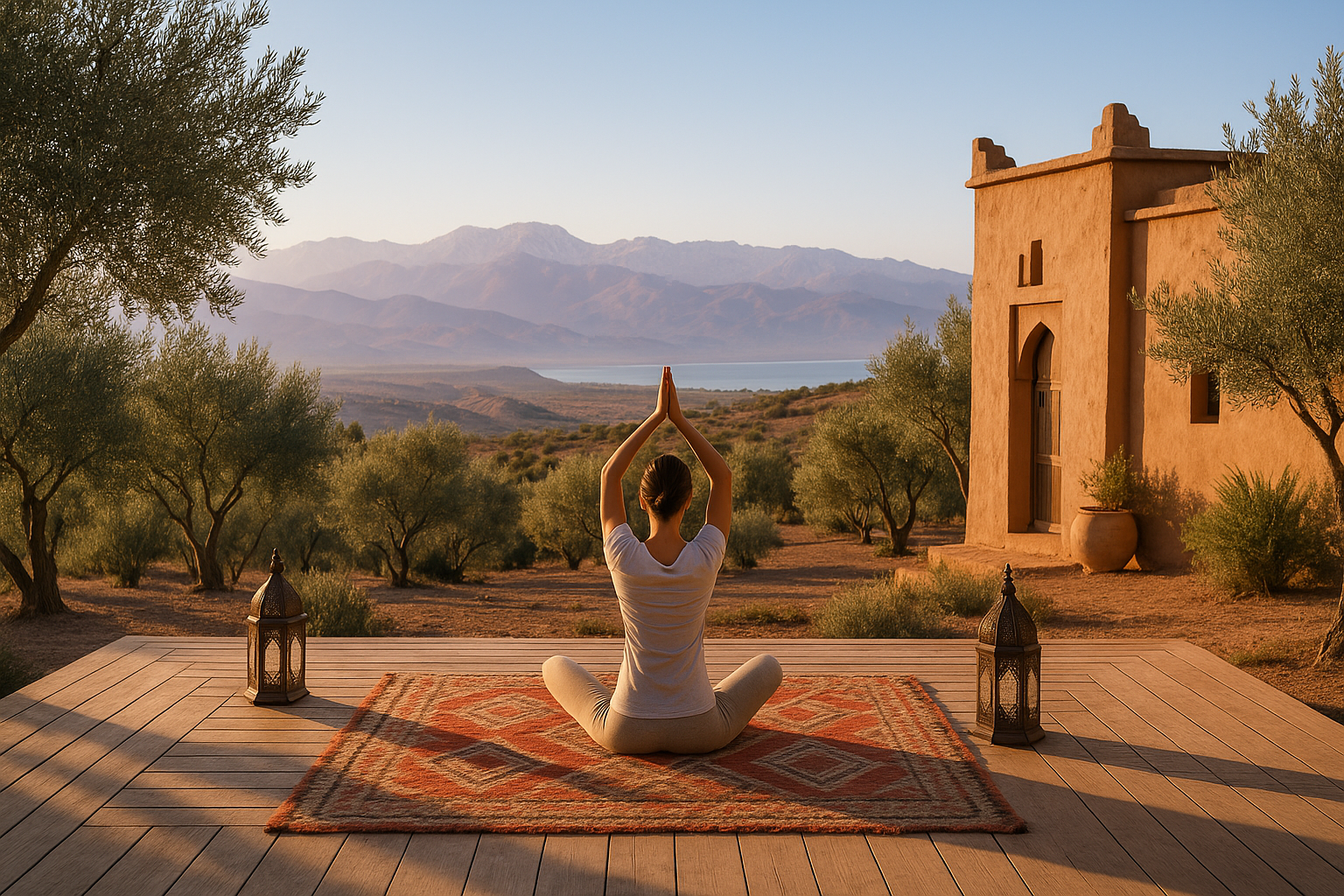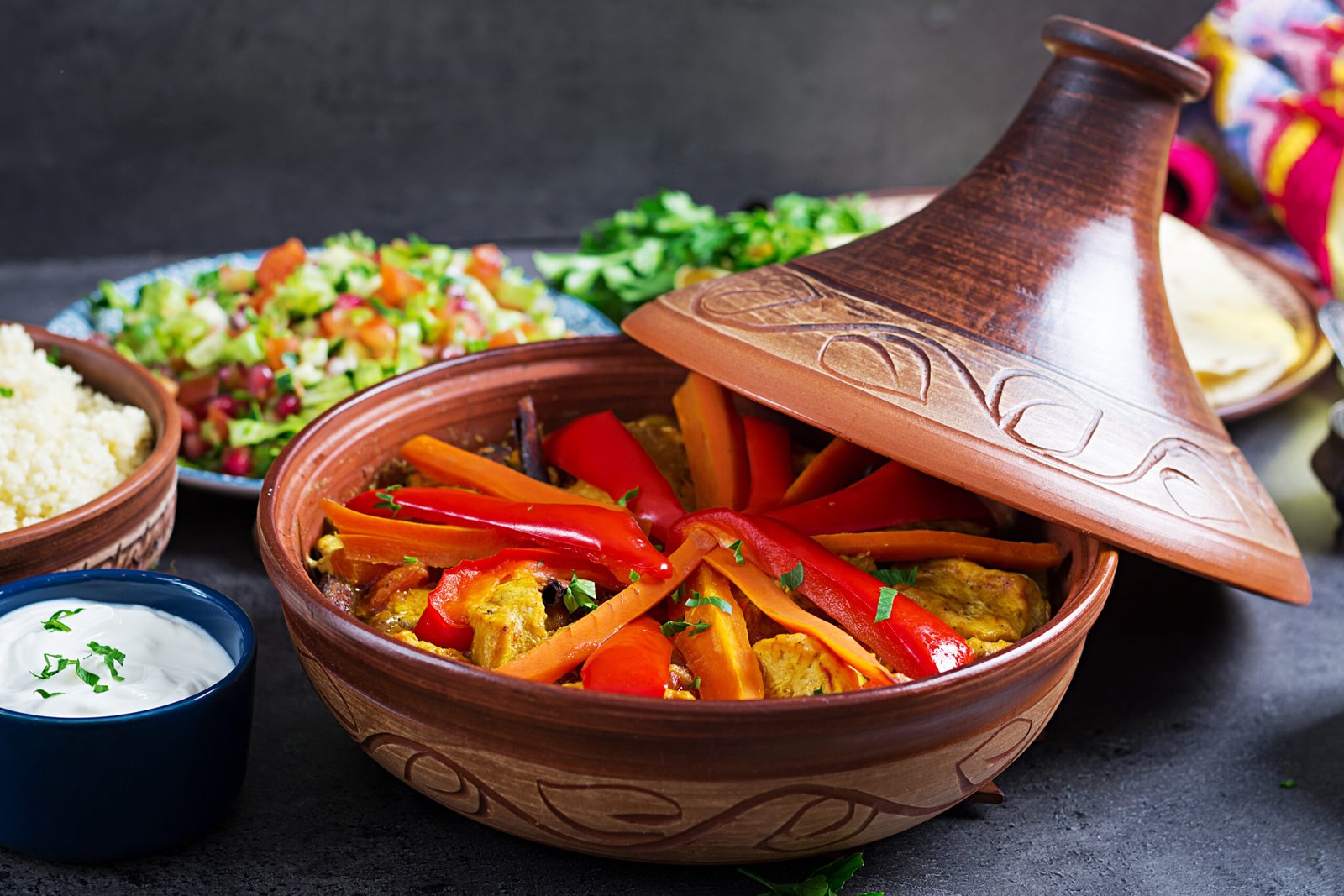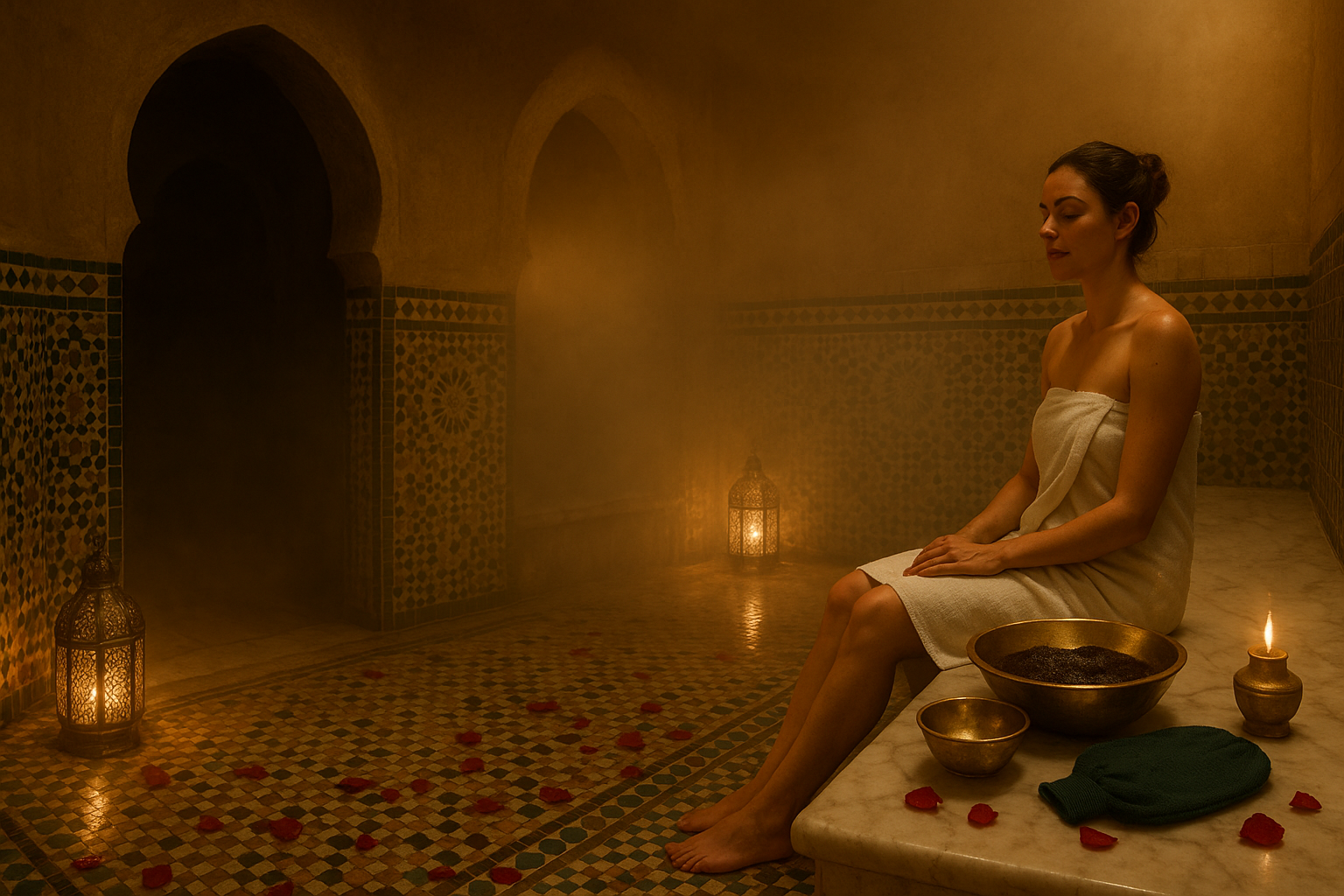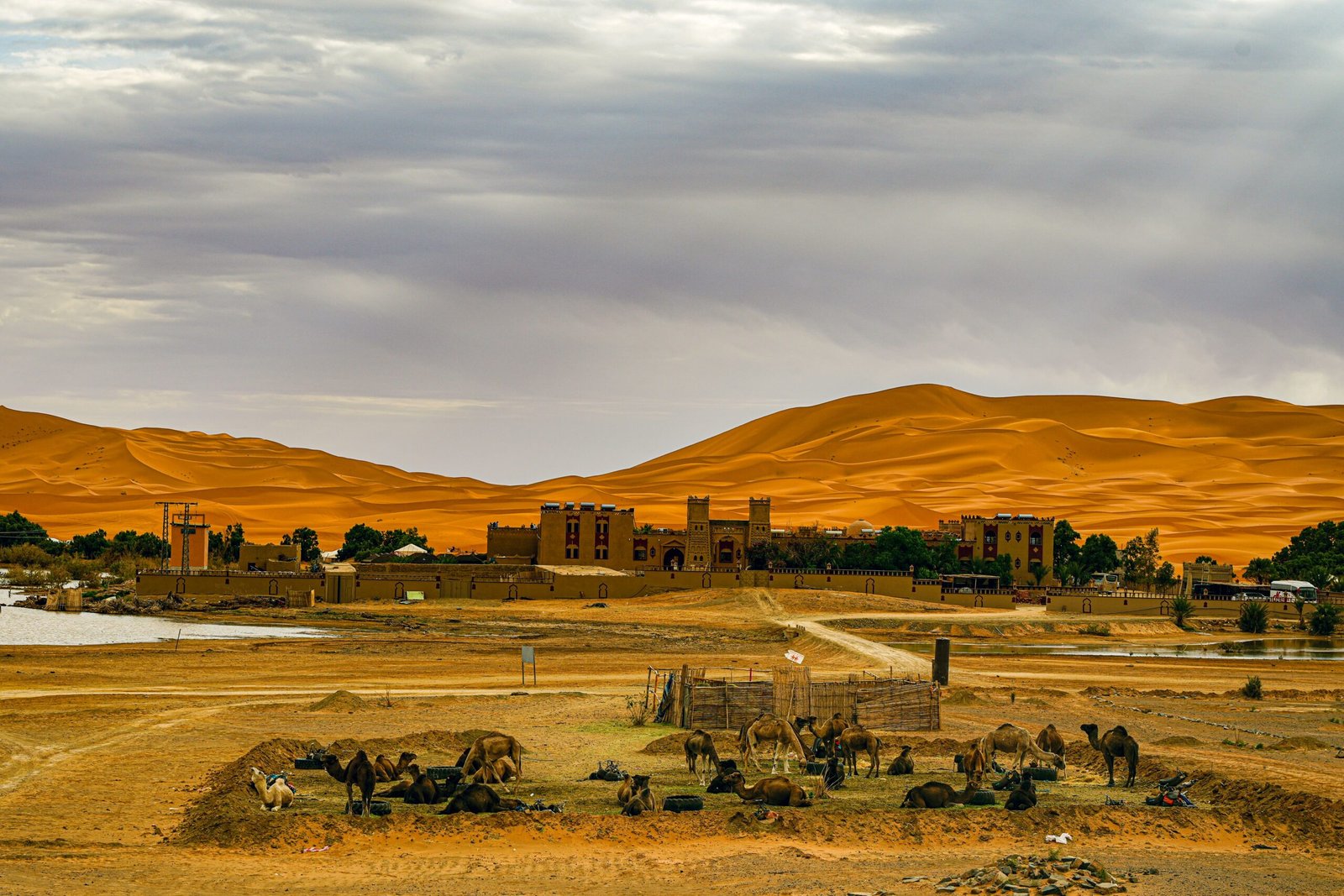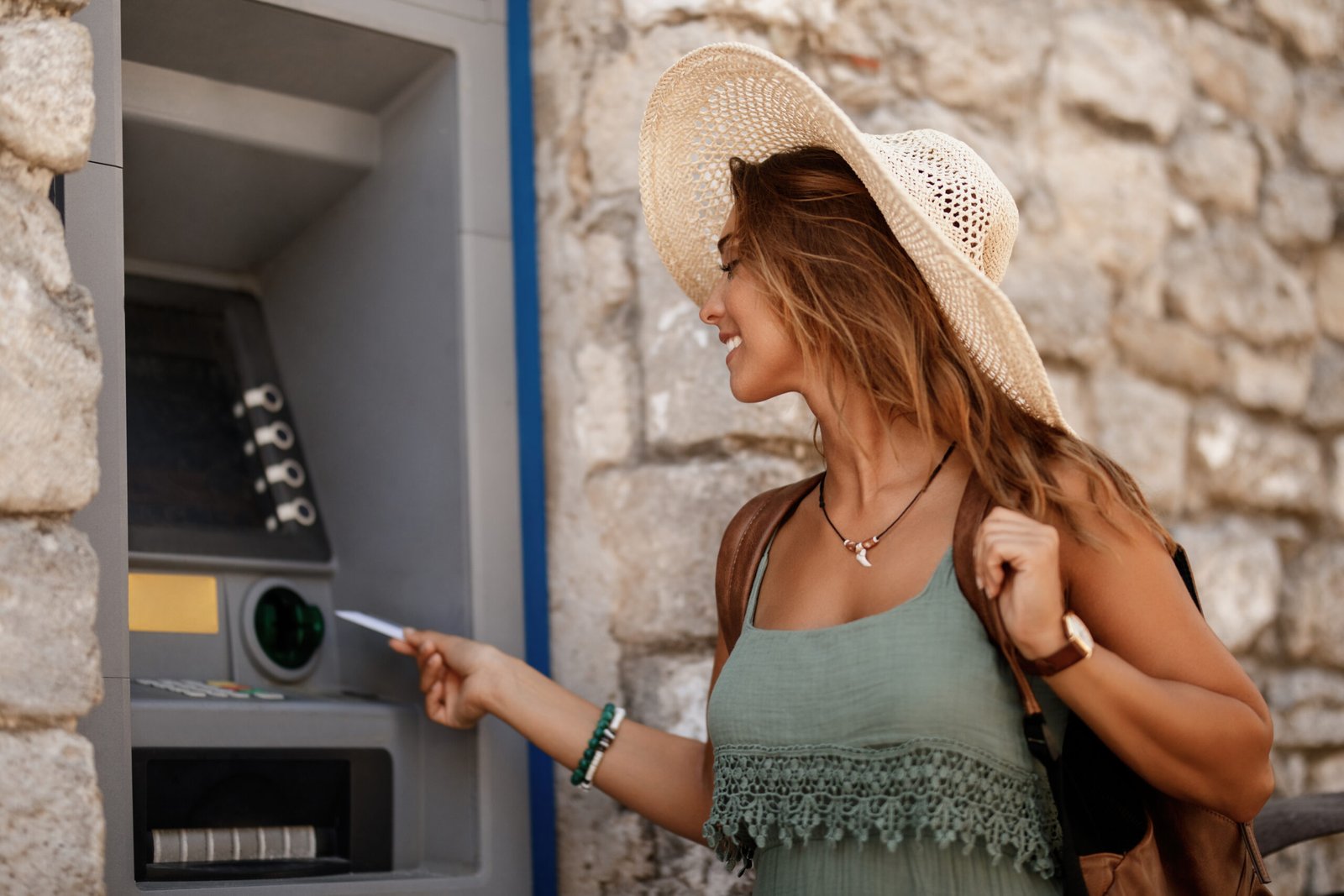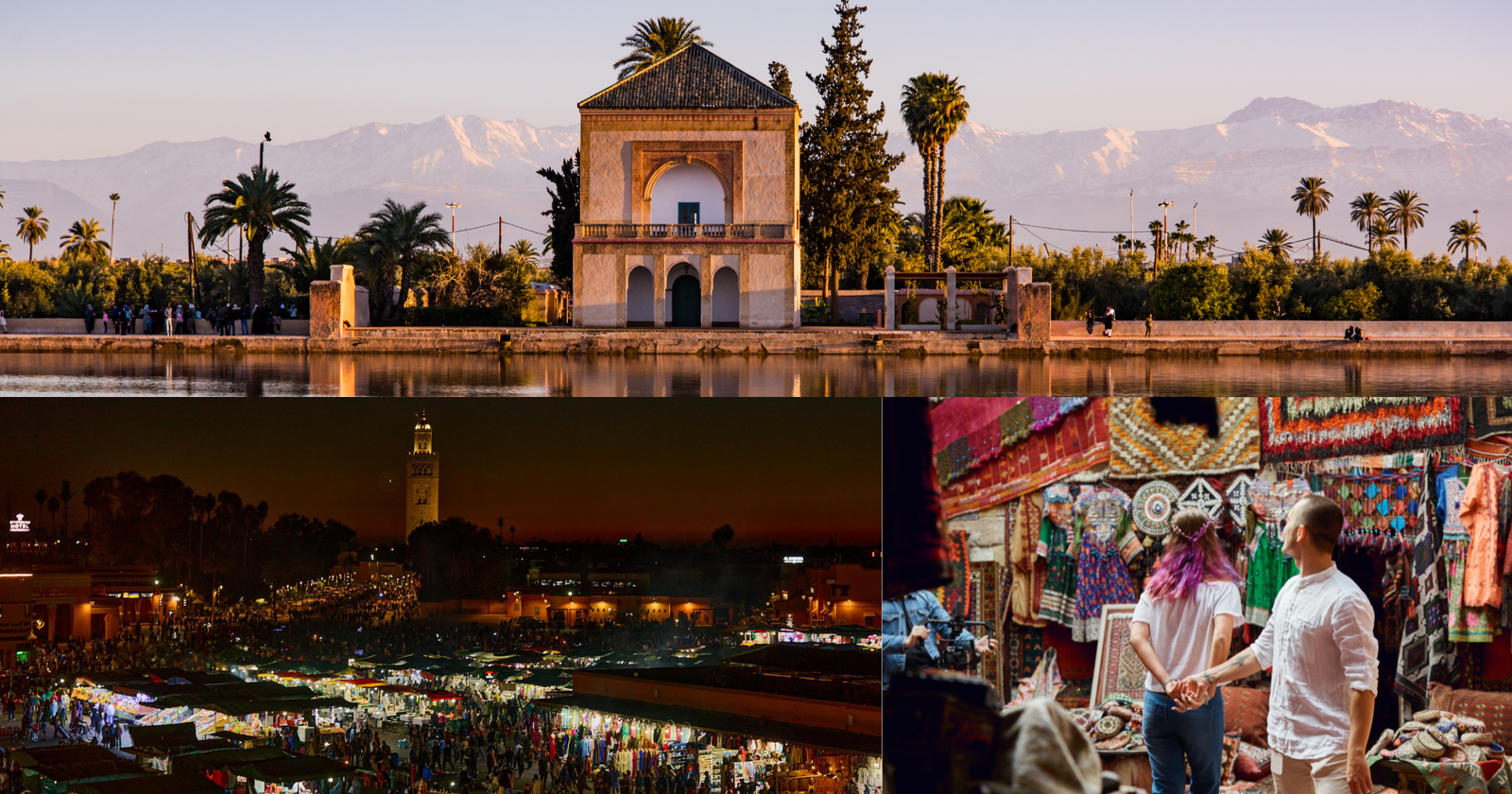Moroccan Garden & Museums: where beauty meets culture — did you know Morocco is home to some of the most stunning cultural spots? They show off the country’s rich culture and natural beauty. From Marrakech’s lively souks to the calm Jardin Majorelle, Morocco is a mix of cultural and natural wonders. It draws visitors from all over.
Exploring Morocco, you’ll find museums focused on local culture and history. They help you understand the country and its people better. Whether you love history, art, or just want to see local life, Morocco’s museums and gardens have something for you.
Start a journey through Morocco’s most exciting museums and gardens. See the country’s rich heritage up close.
The Cultural Significance of Moroccan Gardens & Museums
Exploring Morocco, you find its gardens and museums are more than pretty spots. They open doors to the country’s rich culture. These places show Morocco’s varied history, shaped by Islamic, Arab, Berber, and European influences.
Historical Evolution of Cultural Spaces in Morocco
Moroccan gardens and museums have a long history. They reflect Morocco’s role as a crossroads of civilizations. The evolution of Moroccan garden design is rooted in Islamic traditions, seeing gardens as symbols of paradise.
Over time, these gardens have added architectural features like riads and courtyards. They create peaceful spots in busy cities.
Different dynasties and rulers have shaped these cultural spaces. For example, the Majorelle Garden in Marrakech mixes Art Deco with Islamic styles, thanks to French artist Jacques Majorelle.
What Makes Moroccan Cultural Sites Unique
Moroccan cultural sites blend traditional and modern in a unique way. The Moroccan garden style uses bright colors, detailed tile work, and lush plants. This creates a rich experience for visitors.
Water features like fountains and canals add to the calm. They reflect Islamic culture’s value of water. The gardens also feature a mix of local and exotic plants, showing off the area’s biodiversity.
The architecture, with its arches, domes, and minarets, is adorned with zellij tile work. This highlights the skill of Moroccan artisans.
Planning Your Moroccan Cultural Journey from the UK
Getting ready for your Moroccan trip is exciting. Knowing the best times to go and what to prepare is important. Morocco offers a rich culture and stunning gardens, making it a great choice for UK travelers.
Best Seasons for UK Travelers
Morocco’s weather changes a lot from north to south. Choosing the right season is key for a good trip. The best times to visit are spring (March to May) and autumn (September to November). The weather is mild and nice during these times.
- Spring is great for seeing flowers bloom and green landscapes. Places like Majorelle and Menara are perfect then.
- Autumn is ideal for exploring museums and cultural sites. It’s not too hot like in summer.
Summer is very hot, mainly in the desert. Winters can be cool, more so in the mornings and evenings. Make sure to pack right for the season you travel in.
Travel Requirements and Preparations
Before you go, make sure you have all the right documents and preparations.
- Passport and Visa: Find out if you need a visa for Morocco. Your passport should be valid for at least six months after you leave.
- Vaccinations: Talk to your doctor or a travel clinic about needed vaccinations. Morocco usually doesn’t require special shots, but keep your routine vaccinations up to date.
- Travel Insurance: Think about getting travel insurance. It should cover medical costs, trip cancellations, and delays.
Knowing and preparing for these things will make your trip to Morocco smooth and fun. You’ll get to enjoy its culture and natural beauty fully.
How to Navigate Moroccan Garden & Museum Etiquette
Visiting Morocco’s gardens and museums requires knowing the local etiquette. This knowledge ensures a respectful and enjoyable visit. Morocco’s gardens and museums reflect its rich cultural heritage. Being aware of local customs and rules will make your visit better.
Appropriate Dress Code for Cultural Sites
Morocco is a conservative country. Dressing modestly is key when visiting cultural sites. Cover your shoulders and knees as a sign of respect. Women might need a scarf to cover their head if needed. Men should avoid shorts and sleeveless shirts.
Dressing modestly shows respect for the local culture. It also helps you blend in and have a more authentic experience.
Some key dressing tips include:
- Wear loose, comfortable clothing that covers your body.
- Avoid bright colors or bold patterns that might draw unnecessary attention.
- Consider layers for cooler mornings and evenings, specially in the spring and fall.
Photography Rules and Restrictions
Photography is a great way to capture the beauty of Moroccan gardens and museums. But, there are rules to follow. Some sites may restrict photography altogether, while others might allow it without flash or tripods. Always look for signs indicating photography rules or ask your guide or the staff on site.
Here are some general photography guidelines:
- Check if there are any restrictions on photography equipment like tripods.
- Be respectful of other visitors and avoid using flash when it’s not allowed.
- Consider the privacy of staff and other visitors when taking photos.
Interacting with Staff and Guides
Interacting with staff and guides at Moroccan gardens and museums can greatly enhance your experience. These individuals are knowledgeable about the sites and happy to share insights into the local culture and history. Be respectful, polite, and open-minded, and don’t hesitate to ask questions.
Some tips for interacting with staff and guides include:
- Learn a few basic Arabic phrases like “hello” (مرحبا – Marhaba) and “thank you” (شكرا – Shukraan) to show respect.
- Be prepared to ask questions and listen to their stories.
- Showing appreciation for their knowledge can go a long way in making your interaction pleasant.
By being mindful of the dress code, photography rules, and how you interact with staff and guides, you can ensure a respectful and enjoyable visit to Morocco’s beautiful gardens and museums.
Marrakech’s Premier Museums: A Visitor’s Guide
Exploring Marrakech reveals a treasure trove of cultural riches in its top museums. These world-class spots highlight Morocco’s rich history and artistic flair.
Exploring the Yves Saint Laurent Museum
The Yves Saint Laurent Museum is a must-see for fashion and art lovers. It celebrates the life and work of the famous designer. The museum’s gardens are also a highlight, featuring beautiful Berber plants and tranquil water features.
Discovering the Museum of Marrakech
The Museum of Marrakech dives into the city’s history and culture. It has artifacts from before colonial times to today. The museum is in a stunning Moroccan building, with detailed tile work and carved wooden ceilings. Visitors can explore exhibits on various aspects of Marrakech’s history, from its founding to its modern-day cultural significance.
Appreciating Dar Si Said’s Craftsmanship
Dar Si Said is a treasure among Marrakech’s museums, focusing on traditional Moroccan crafts. It showcases woodwork, metalwork, and textiles, highlighting Moroccan artisans’ skill. The building itself is a work of art, with beautiful architecture that reflects southern Morocco’s traditional styles.
Visiting these museums offers a deeper look into Marrakech’s cultural heritage. It shows the city’s importance in Moroccan history and art. Whether you’re into history, art, or local culture, Marrakech’s premier museums have something for everyone.
How to Experience the Iconic Majorelle Garden
When you enter the Majorelle Garden, you’ll find yourself in a world full of colors and exotic beauty. This magical garden was created by French artist Jacques Majorelle and later restored by Yves Saint Laurent. It’s a top spot to visit in Marrakech.
Best Times to Visit for Optimal Experience
Choosing the right time to visit the Majorelle Garden is key. It’s open all year, but spring (March to May) or autumn (September to November) are best. The weather is mild and pleasant during these seasons. Try to avoid summer when it gets very hot.
Early morning or late afternoon are the best times to go. The light is soft, and there are fewer people. This lets you enjoy the garden’s beauty without the crowds.
Navigating the Garden’s Key Features
The Majorelle Garden is a true work of Moroccan garden design. It showcases a wide variety of plants from all over the world. As you wander through, you’ll see:
- A stunning collection of Moroccan garden plants, like cacti, bamboo, and exotic flowers.
- The famous blue buildings and paths that make the garden unique.
- A peaceful setting, filled with the sound of water and birds.
Photography Tips for Capturing the Blue Paradise
The Majorelle Garden is a photographer’s paradise, with its bright colors and architecture. Here are some tips to capture its beauty:
- Take photos during the golden hour (early morning or late afternoon) for the best light.
- Try different angles and perspectives to add depth to your photos.
- Focus on the garden’s architecture and plant details.
By following these tips, you can capture the essence of the Majorelle Garden. You’ll leave with unforgettable memories of your visit.
Exploring Royal Gardens of Morocco
As you explore Morocco, you’ll find the royal gardens. They are filled with history and tradition. These gardens are peaceful oases that show Morocco’s rich gardening and building skills.

Walking Tour of Menara Gardens
The Menara Gardens are on the outskirts of Marrakech. They are a great example of Moroccan garden design. Built in the 12th century, they were made during the Almohad dynasty.
Walking through the olive groves, you’ll find the central pavilion. It gives a beautiful view of the area. The gardens are stunning in the spring when flowers bloom.
Key Features of Menara Gardens:
- Historic olive groves
- Central pavilion with scenic views
- Tranquil atmosphere perfect for relaxation
Discovering the Historic Agdal Gardens
The Agdal Gardens in Marrakech show off ancient irrigation systems. These gardens have been beautiful and useful for centuries. They have big orchards and complex water systems.
The Agdal Gardens show the advanced engineering of the Almohad period. They mix nature and architecture well.
Glimpses of Royal Palace Gardens
The Royal Palace Gardens in Morocco are not always open. But they are a big part of Morocco’s royal history. These gardens have nice lawns and fancy fountains. They show the grandness of Moroccan royalty.
The royal gardens in Morocco, like those in Fez, Rabat, and Marrakech, share a common theme. They mix traditional Moroccan architecture with lush plants. Exploring these gardens helps you understand their cultural and historical importance.
Fez’s Cultural Treasures: Museums and Gardens
Fez is a city full of cultural wonders, with many museums and gardens. As you wander through Fez, you’ll see a mix of history, art, and architecture. This shows the city’s importance in Moroccan culture.
Batha Museum: Moroccan Arts and Crafts
The Batha Museum is a key place to visit in Fez. It showcases Moroccan arts and crafts. You can see traditional crafts like woodwork, ceramics, and textiles. These give a glimpse into Morocco’s artisanal past.
- Exhibits on traditional Moroccan crafts
- Beautifully restored 19th-century palace
- Insights into Fez’s cultural and artistic history
Nejjarine Museum’s Wooden Masterpieces
In the heart of Fez, the Nejjarine Museum focuses on woodworking. It displays exquisite wooden masterpieces that show Moroccan craftsmen’s skill. The museum is in a historic caravanserai, or inn, where travelers used to stay.
- Intricately carved wooden doors and furniture
- Historical significance of the caravanserai
- Exhibits on the craft of woodworking in Morocco
Relaxing in Jnan Sbil Gardens
After seeing the museums, Jnan Sbil Gardens is a peaceful place to visit. These gardens have a Moroccan garden style. They have calm water features, greenery, and paths for walking. It’s perfect for relaxing and taking photos.
- Tranquil atmosphere and beautiful landscaping
- Historic significance as a former royal garden
- Opportunities for leisurely strolls and photography
Fez’s museums and gardens show the city’s rich culture. They let visitors connect with Morocco’s history and art. Whether you’re at the Batha Museum, looking at woodwork at Nejjarine, or walking in Jnan Sbil Gardens, Fez offers a deep cultural experience.
Rabat’s Must-Visit Cultural Institutions
Exploring Rabat reveals a rich tapestry of cultural institutions. The city, as the capital, boasts museums and gardens filled with history and art.
Contemporary Art at Mohammed VI Museum
The Mohammed VI Museum showcases modern Moroccan art. You’ll see innovative works that highlight the country’s artistic growth.
- Explore the museum’s permanent collections
- Attend temporary exhibitions by local and international artists
- Join workshops and events for art lovers
Strolling Through the Andalusian Gardens
The Andalusian Gardens offer a peaceful retreat. Stroll along the paths and enjoy the garden’s beauty.
- Admire the garden’s architecture, like fountains and pavilions
- Discover the diverse plant species and fragrant flowers
- Relax in the calm atmosphere, ideal for reflection
Archaeological Discoveries at Rabat Museum
The Rabat Museum houses archaeological treasures. Explore the exhibits to learn about Morocco’s history.
Visiting these places will give you a full view of Rabat’s history, art, and culture.
Tangier’s Artistic and Garden Heritage
Tangier is a treasure trove of cultural experiences. As you explore this historic city, you’ll find a mix of old and new. It shows the city’s rich history.
American Legation: Morocco’s American Connection
The American Legation in Tangier is a key cultural site. It’s one of the first diplomatic missions between the U.S. and Morocco. This historic building now houses a museum. It shows the country’s ties with America through art and artifacts.

Kasbah Museum’s Historical Collections
The Kasbah Museum is in the Kasbah. It gives a look into Tangier’s past with its historical artifacts and fine arts. The museum’s exhibits cover everything from ancient finds to modern works. They show how the region’s culture has changed over time.
The Charm of Mendoubia Gardens
Mendoubia Gardens is a peaceful oasis in Tangier. These beautifully maintained gardens are great for relaxing and finding inspiration. With its diverse plants and calm atmosphere, it’s perfect for garden design ideas.
Exploring Tangier’s museums and gardens is a unique experience. It offers a chance to see the city’s artistic and garden heritage. For those wanting to bring Morocco home, Tangier’s sites are full of inspiration for gardens and décor.
How to Incorporate Moroccan Garden Design Elements at Home
Turn your UK garden into a lively oasis with Moroccan design. Moroccan gardens are famous for their bright colors, detailed patterns, and lush plants. They make your outdoor space both unique and inviting.
Water Features for UK Gardens
Water features are key in Moroccan garden design. They often include detailed tile work and calming sounds. To add this to your UK garden, think about a small fountain or pond with pretty tiles.
Tips for implementing water features:
- Choose a fountain or pond that fits your garden’s size.
- Use decorative tiles or mosaics for a Moroccan touch.
- Think about the sound of the water and how it affects the mood.
Climate-Appropriate Plant Selection
Moroccan gardens are full of greenery, but the UK’s climate is cooler. To make Moroccan garden ideas work in your UK garden, pick plants that do well in your area.
Some climate-appropriate options include:
- Herbs like rosemary and thyme, found in Moroccan gardens.
- Hardy perennials such as lavender and geranium.
- Evergreen shrubs for structure all year.
Decorative Elements and Materials
Moroccan garden design is known for its bright colors and detailed patterns. These are often made with decorative tiles, zellij, and carved wood.
To incorporate these elements into your UK garden:
- Use colorful tiles or mosaics for paths or decorations.
- Add carved wood or metalwork to furniture or features.
- Think about a Moroccan-inspired archway or gate.
Practical Tips for an Enriching Museum and Garden Experience
Morocco’s museums and gardens showcase its rich culture. With some planning, your visit can be truly enriching. Whether in Marrakech or Fez, there are ways to make your experience better.
Hiring Local Guides: Benefits and Finding the Best
A local guide can greatly enhance your visit to Moroccan museums and gardens. They offer insights into the sites’ history, architecture, and cultural significance. To find a good guide, ask your hotel or local tourism offices for recommendations. Online reviews can also help you choose a knowledgeable guide.
Benefits of hiring a local guide include:
- Expert knowledge of the site’s history and cultural significance
- Ability to navigate the site efficiently and avoid crowds
- Insights into local customs and etiquette
Accessibility Information for Different Sites
Check the accessibility features of Moroccan museums and gardens before visiting. Some sites may have limited access due to their historic nature or terrain. For example, some gardens have uneven paths or stairs, while museums might not have elevators. Knowing this ahead of time helps ensure a comfortable visit.
Tips for visiting sites with limited accessibility:
- Check the site’s website or contact them directly to inquire about accessibility features
- Plan your visit during less busy times to avoid crowds
- Consider hiring a guide who can assist you with navigating the site
Combining Garden and Museum Visits Efficiently
Combining garden and museum visits can save time and money. Many Moroccan cities have these attractions close to each other. Planning your itinerary well helps you avoid unnecessary travel costs and makes the most of your time.
Tips for combining visits:
- Research the locations of museums and gardens in the city you’re visiting
- Plan your itinerary according to the opening hours and ticket prices of each site
- Consider purchasing a combined ticket or guided tour to save time and money
Conclusion: Bringing Morocco’s Cultural Magic Home
After your Moroccan trip, the memories of colorful sites and peaceful gardens stay with you. They inspire you to bring a bit of Morocco’s magic to your home. You can add Moroccan garden inspiration to your yard with details like fancy tile work, lots of greenery, and calm water features. These are key parts of the Moroccan garden style.
Think about adding decorations that show off Moroccan garden décor. This could be bright pottery, lanterns, and fancy metal pieces. These elements will make your garden look great and remind you of Morocco’s rich culture.
By mixing these elements, you can make a special outdoor area that captures Morocco’s beauty and calm. It lets you enjoy your travel memories and share them with others.

